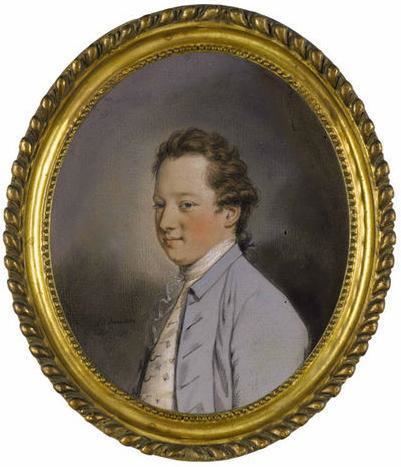Name Sir Williams-Wynn, Role Politician | Died July 24, 1789 | |
 | ||
Parents Sir Watkin Williams-Wynn, 3rd Baronet Grandparents Sir William Williams, 2nd Baronet, of Gray's Inn | ||
Sir Watkin Williams-Wynn, 4th Baronet (23 September 1749 – 24 July 1789) was a Welsh landowner, politician and patron of the arts. The Williams-Wynn baronets had been begun in 1688 by the politician Sir William Williams, 1st Baronet but had inherited, in the time of the 3rd baronet, Sir Watkin's father, the estates of the Wynn baronets, and changed their name to reflect this.
Contents
Biography
Williams-Wynn was the eldest son of the second marriage of his father, Sir Watkin Williams-Wynn, 3rd Baronet, to Frances Shackerley of Cheshire. He was a baby when his father was killed by a fall from his horse while out hunting, and he inherited the extensive Wynnstay estates, the largest in North Wales. These straddled at least five Welsh counties and extended into Shropshire in England, and yielded an estimated rental income of £20,000 — a very substantial sum at the time, whose spending he tackled with enthusiasm and considerable success. On his coming of age in 1770, he held an extravagant party for 15,000 guests; the bills record consumption of "31 bullocks, 50 hogs, 50 calves, 80 sheep, 18,000 eggs...." An embroidered suit which he may have worn on this occasion is in the possession of the National Museum of Wales.
The family had been powerful in politics for several generations, and Sir Watkin effectively controlled several Parliamentary seats and led a Tory faction in the House of Commons, though he was less involved in politics than his father, and tended not to lead his faction decisively. The influence of the family had declined during his long minority. Sir Watkin was Member of Parliament (MP) for Shropshire from 1772 to 1774, and for Denbighshire from 1774 until his death in 1789. He was criticized for poor attendance. He was Lord Lieutenant of Merionethshire from 1775-1789.
Family
He was married twice, first in April 1769 to Lady Henrietta Somerset, who died very shortly afterwards in July 1769, and in December 1771 to Lady Charlotte Grenville, daughter of a former Whig Prime Minister. He had three sons and two daughters from this second marriage, including Sir Watkin Williams-Wynn, 5th Baronet, and Charles Williams-Wynn (1775–1850). His daughter, Henrietta Elizabeth Williams-Wynn, married Thomas Cholmondeley, 1st Baron Delamere of Vale Royal (b. 9 Aug 1767, d. 30 Oct 1855).
Patron of the arts
Sir Watkin made a Grand Tour to Europe from June 1768, returning by February the next year for his wedding in April. In Rome Pompeo Batoni painted him with some companions, and a classical subject, Bacchus and Ariadne was commissioned later, in 1774. The Rococo silver-gilt toilet service he gave to his first wife, by the London goldsmith Thomas Heming, is now in the National Museum of Wales. The Neoclassical grave monument for her is by Joseph Nollekens, in St Mary's Church, Ruabon, Clwyd.
Sir Watkin played a significant role in the development of art in Wales, as an early patron of landscape painting there, which was to become the largest area of artistic activity in Wales. He brought both Richard Wilson and Paul Sandby to his seat at Wynnstay, Sandby staying six weeks in the summer of 1770, giving lessons to the family as well as painting, on his first visit to Wales. The next year Sandby returned and from 21 August to 4 September 1771 he and Sir Watkin toured through the mountains of northern Wales. From the sketches made on the tour Sandby published twelve aquatint Views in North Wales in 1776, and five of his Views in Wales of 1777. Matching sets from South Wales came from his tours there with Sir Joseph Banks, who commissioned the whole series. A more ambitious tour together, to Italy, was planned but cancelled after Sir Watkin's second marriage.
Sir Watkin commissioned Robert Adam to build 20-21 St James's Square in London which was constructed between 1771 and 1775. Sir Joshua Reynolds received several commissions from Sir Watkin, some of which remain with the family. These include a portrait of him with his first wife in "Van Dyck" costume, and another of his second wife with her children, in around 1784, one with his mother (1768-69, National Gallery, London), one of Sir Watkin presiding over the Society of Dilettanti (1777, now on loan to Brooks' Club), and one of his eldest son as John the Baptist.
He supported the Concerts of Antient Music, and is caricatured by James Gilray in a depiction of King George III of England attending one he organized.
